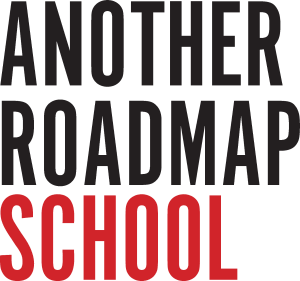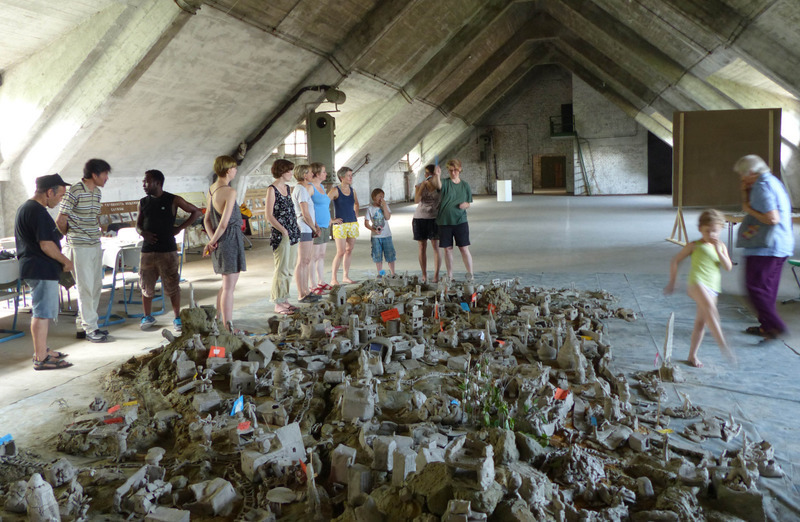by Claudia Hummel
Historiography in the field of artistic-educational work
Eleven years ago, a rapidly developing field of practice called cultural education was established in Berlin. In November 2006, a conference consisting of a series of workshops initiated by the Berlin Arts Committee (Rat für die Künste) took place called “Advancement Cultural Education in Berlin” (“Offensive Kulturelle Bildung in Berlin”). Around 150 representatives from education and culture sat together for two days and discussed in smaller groups cultural education and its establishment and organisation in the city of Berlin.
In March 2008, the mandate for cultural education not only for public cultural institutions in Berlin, but also for Berlin schools, was formulated and decided on within the conceptual framework for cultural education by the Berlin Senate. At the same time, diverse funding structures were developed by foundations and German states in order to finance artistic-educational projects, primarily in cooperation with schools.
However, a first phase in the development of artistic-educational ways of working – that is the collaboration of artists with schools, independent educational institutions or with communities – had already taken place in former West-Germany in the 1970s. The Artist Congress in 1971 in Frankfurt am Main can be seen as a starting point for this movement. At the congress it was expressed that the myth of fine art had to now be finally overcome in order to establish art as an emancipatory occupation (for everybody).
Astonishingly, those making art today are little aware of this first extensive movement of artistic-educational work. This is even more true for those who work in the numerous funding structures that have been established in the last ten years. In many cases, those who administrate the economical foundations of artistic-educational projects have even less an awareness of this first wave.
Pilot Programme for the Further Education of Artists
I have been working as a lecturer in the Institute for Art in Context at the Berlin University of the Arts since 2009. The forerunner of the institute was the (former) “Pilot Programme for the Further Education of Artists” (“Modellversuch Künstlerweiterbildung”), which ran from 1976-81. The aim of this pilot programme was to prepare artists for artistic collaborations with different communities and institutions. Numerous co-operations with unions, schools and prisons were tested out. In addition to this, artistic interventions took place in the public realm.
Project example #1: Construction project Participate City (Mitmachstadt)
An example of a project developed within the Pilot Programme for the Further Education of Artists is the “Construction Project Participate City” (“Bauvorhaben Mitmachstadt“). This project involved the construction of a model city from seven to nine tonnes of clay. This urban artistic-participatory experiment took place several times in the years 1979-81 in different West-German cities such as Kiel, Bremen, Oldenburg or Bonn. This experiment was developed by the group „Leut’Werk“: Eckhart Haisch, Konstanze Schmidbauer (née. Hedrich), Ingolf Kirsch and Gabriele Ramdohr, all of whom were students on the “Pilot Programme for the Further Education of Artists”.
The project development and its realisation was overseen by the artist HK Bast, who was at that time a tutor on the programme. Role playing with the public in order to negotiate questions and conflicts surrounding urban development complemented the construction of a model city over a series of days. Co-operations also arose to some extent with urban citizens’ initiatives, who were then campaigning predominantly for the preservation of historical buildings in an era of the demolition and sanitisation of large urban areas.
Although there were Participate Cities in many places, and a television programme called Artists Leave the Ivory Tower (Künstler verlassen den Elfenbeinturm, ZDF 1980) which documented the construction and the role playing in the Participate City in Oldenburg, this process-related and experience-based artistic practice has neither found its way into the historiography of art nor of education.
The “Construction Project Participate City” was for this reason restaged by the Institute for Art in Context as “ Participate City Bernau” from June to September 2015 within the multi-year project CONTEXT LABORATORY BERNAU (KONTEXT LABOR BERNAU).
[1]
This time, the project focused on examining a complex of urban buildings in the city of Bernau bei Berlin. These buildings were constructed under National Socialism and had lain empty since 1994. Now, after their recent privatisation, they were to be converted into a site with luxury apartments.
Project example #2: Games Club (Spielclub) in 20a Kulmer Street, 1972 “The Celebration”
In August 1970, artists from the group
Hoffmann’s Comic Teater
(the leaving out of the “h” is programmatic) rented a floor of a factory building in the back courtyard of 20a Kulmer Street in Berlin Schöneberg. They did so together with artists from the Berlin art space nGbK, who were members of the working group
Games Environment/World Children’s Toys, Children’s Books.
Over several months, they constructed a city at the Games Club together with children and teenagers from the local neighbourhood. This city contained, amongst others, a hotel, a bank, a stage, a saloon, a nursery school, a waffle stall, a camera shop, a shop selling wallpaper, a bookshop, a radio station, a dye factory, a wholesaler, and a boxing ring.
Role-playing accompanied the progressive construction of the city. These role plays, which went on sometimes for several days, ranged from bank robbery to negotiating the formation of a wholesale monopoly, and even to the establishment of a commune with equal rights for all. The role plays often dealt with questions concerning property, compensation and finance. The intention of the artists was, amongst others, to let the children experience the mechanism of capitalism.
The adults accompanied the children in their role-playing, which were also (critically) reflected on by the grown-ups. After a year of working in 20a Kulmer Street, the play city was transferred to an area of Berlin called Märkisches Viertel.
The role plays and reflections of the adult actors were published in 1974 in the book “flowers and fairy tales. working in an urban district with children in mv berlin” (”
blumen und märchen. stadtteilarbeit mit kindern im mv berlin
“) under the collective authorship of “
the group of authors of the West Berlin People’s Theatre Co-operative
” (
Autorengruppe Westberliner Volkstheaterkooperative)
. The children called the game at the club “The Celebration” (“Das Fest”). It was incorporated into the play “
How Bonzo Earned Himself a Thrashing
” (“
Wie sich Bonzo Dresche verdiente”)
from
Hoffmann’s Comic Teater
, which was published in 1973 by Basis.
The Games Club at 20a Kulmer Street and the following transfer of the play city to Märkisches Viertel constitutes one of the most important stations within the Berlin history of artistic-educational work, addressing the issues of city, democracy and economy. Later, there was a Participate City in Munich for many years called “Mini-Munich” in the style of the Berlin example.
In summer semester 2017, I will restage the experiment of the Games Club from 20a Kulmer Street together with students from the Institute for Art in Context. We will do so in the same location as in 1970 – 20a Kulmer Street. Children and teenagers from local schools will be invited to construct a play city together with the artists. Members of
Hoffmann’s Comic Teater
have stated that they will supply us with further documentation from the 1970s, and will advise and support our restaging.
The practice of restaging
The practice of restaging artistic-educational projects is an attempt to establish a continuation from the artistic-educational practices and discourses of 1970’s West Germany, and to further develop these through current questions and problems. The aim of restaging is to (re)write the history of artistic-educational work in Berlin from a contemporary perspective through a form of action research. A further goal is to make sure that current actors are aware of the history of artistic-educational work.
The practice of restaging artistic-educational projects is situated between forms of re-enactments in performance art and in action research (in social science or in pedagogy).
Started as a university project, accompanied by classes, developed by a group of students, a tutor and a further number of local actors, restagings can also be understood as a form of practice-learning or action-learning.
Why artistic-educational forms of practice from the 1970s are interesting today
A multitude of artistic-educational projects in West Germany from the 1970s stand out because of their critical awareness of the economical structures and mechanisms of society at that time.
Artistic-educational work was frequently linked to an emancipatory desire for education. In essays reflecting on the topic, questions on the solidarity of artists with the working class often arise.
Underprivileged, working-class children were the motive for artistic-educational projects. A class society, structures of exploitation and the commodification of the city were aggressively addressed with the aim of explaining societal power relations and fundamental economical structures.
In the “Pilot Programme for the Further Education of Artists”, they called their field of work “Cultural Work”. This choice in terminology was also a way of turning towards the working class. Their concept of culture was declared one of everyday culture, and was at the time already known about due to the Anglo-Saxon discipline of cultural studies.
The present state of artistic-educational projects is not politically straight forward. The strategies of legitimisation (Glatt und Widerborstig; Mörsch 2009) from patrons and actors are diverse. In many cases, cultural education should contribute to integration, school development or should encourage creativity. Economical structures active today are, however, hardly addressed in concepts for artistic-educational projects.
Comprehensive reports such as the UNESCO Road Map 2006 and the Conceptual Outline for Cultural Education Berlin (Rahmenkonzept Kulturelle Bildung Berlin) address the needs and conditions of a society, which expects more and more contributions from the creative industry towards its gross social product. In practice, critical reference to the possible purposes of artistic-educational work in society are, in contrast, only recognisable if actors’ work is supported by theories. This is, however, seldom the case in the wider field.
Contemporary projects seldom explain nor do they reflect on the role of the creative industry or of immaterial work in a global society that transfers its places of manufacture to where workers receive the lowest wages without social security or representation of a union.
However, consciousness of and reference to underlying economical structures are required in order to recognise and position the societal and economic function of artistic-educational work. We might achieve this goal through the experience of the restaging of artistic-educational projects which are critical of capitalism. Yet again, we do not have to have an exclusively affirmative attitude towards projects that are being restaged. Ideally, through these restagings we achieve a better understanding of both the past and present of artistic-educational work.
[1]
The restaging was conceptualised and organised by Claudia Hummel. The artists Herlambang Bayu Aji, Veronika Albrandt, Katrina Blach, Ling-yu He, Namia Leigh, Dagmar Lesiak and Alien Oosting, students at the Institute; the Bernauer ceramist Marianne Freyer; as well as a thousand Bernauer pupils, citizens and other visitors took part in the restaging.

